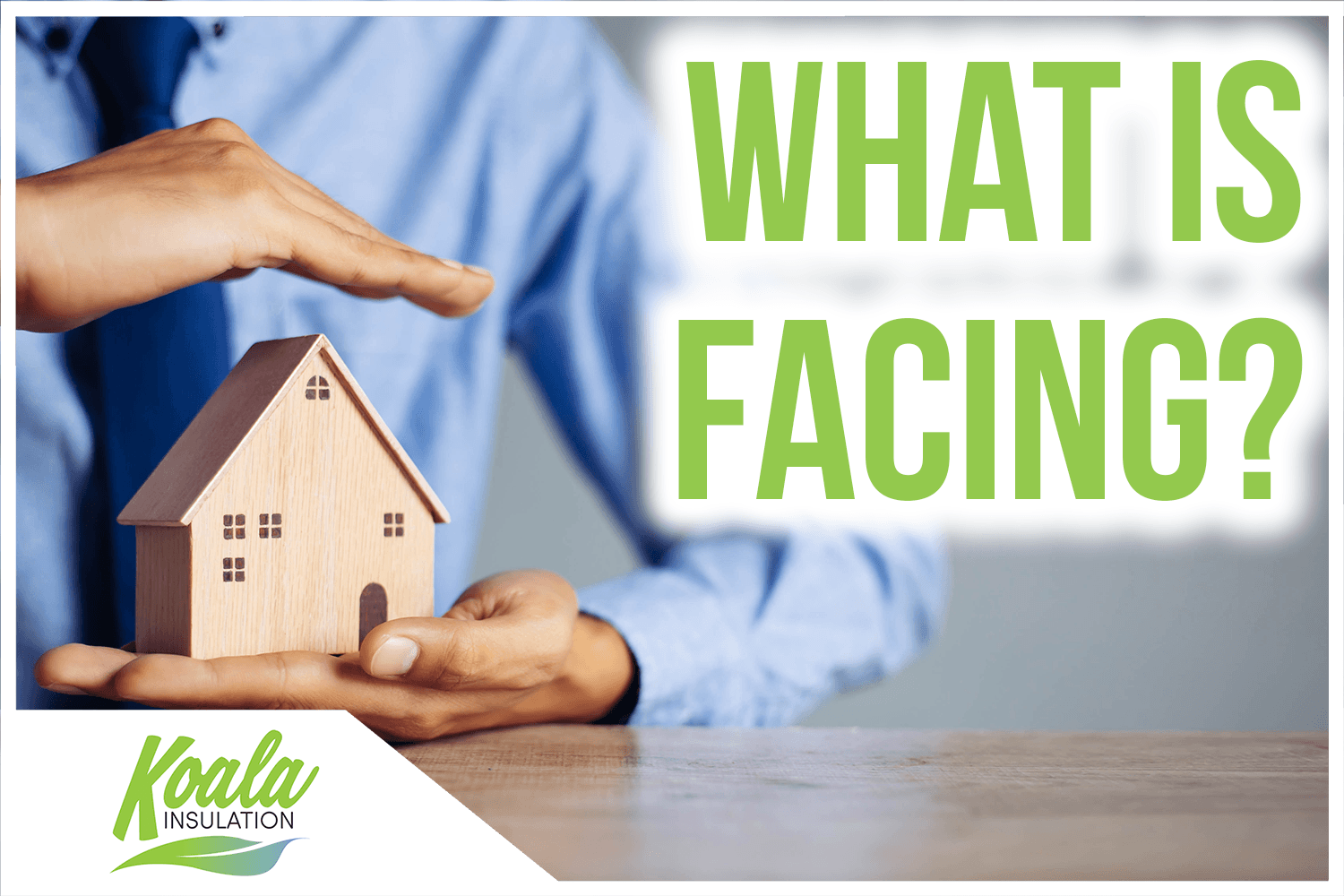What is Facing & How Does It Affect Fiberglass Insulation?

Insulation is an important part of keeping your home safe and comfortable. The material that’s installed throughout your home helps to reduce the rate of heat transfer; this is the movement of heat in and out of your building. In order for the house to effectively defend against unwanted heat, outdoor pollutants, and irregular temperatures, your insulation and air sealing must be regularly removed and updated according to the needs of your house. This is why choosing the right insulation to be installed in your home is crucial for your comfort, safety, and savings.
However, many homeowners don’t understand the various benefits that come with different materials, types, and installations. When it comes to improving your environment along with the household’s savings and energy efficiency, knowing more than the basics of insulation material can carry you a long way. One factor that’s a simple yet effective place to get started is insulation facing. You’ve most likely seen it before without even knowing what you’re looking at!
What is Faced and Unfaced Insulation?
Both faced and unfaced insulation are used in a building for quality prevention against heat loss. However, each has its own benefits that can influence where in the house you decide to have them installed. Faced insulation refers to batt material that has a thin outer layer of paper or plastic, known as a "face". This is used to protect the material, typically fiberglass or mineral wool batts, from humidity, bacteria, and other moisture damages. Unfaced insulation, on the other hand, is a roll or pallet of batt material that does not have paper covering one side.
Where is Faced Insulation Used?
For some homeowners, faced insulation sounds like the obvious choice to have installed throughout your home. However, not only is it considered useless in certain applications, but it also may not be the best choice in comparison to other available materials. It's important to consult an industry professional when considering new or updated material to have installed in your home. Every area has factors that will affect the needs of a home, the most basic variables being climate zone, building codes, and common weather patterns.
One of the primary differences between faced and unfaced insulation are their application benefits. Faced insulation is a great vapor barrier, as mentioned earlier, as it protects the material from moisture damage. However, the paper is flammable; unfaced insulation, on the other hand, is naturally non-combustible in most instances due to the inherent nature of the material itself. Fiberglass and mineral wool, two of the most common materials used for batt insulation, are fire resistant and can significantly reduce the spread of fire (it's important to note this does not mean it stops a fire from burning in every case).
Attics
One of the easiest places to find faced insulation is in your attic. While not every home will have faced insulation batts in between their ceiling joists, the ceiling and walls are the most common areas that will have faced insulation. You may see faced insulation lining the floor, but this may be a DIY error – it’s more likely that an insulation professional has installed blown-in material. The material is pressed in between the cavities, ensuring a snug fit to reduce air leaks, with the paper or plastic facing outward toward the installer.
Crawl Spaces
Underfloor insulation is crucial to reducing heat loss and air leaks. As such, when you enter your crawl space, you may see faced insulation in between floor joists. This has a similar function as the material that's installed on your ceiling throughout the attic, and should be installed the same way with one key difference: the facing should be directed upward. If the material needs support to stay in place, a staple gun can be used to secure the material.
Exterior Walls
When you look at a building being constructed, you may notice paper in between the joists, typically with an insulation production company's logo. This is faced insulation, which is used here to prevent water and moisture from entering the home. It's important to note that because of the flammable paper, unfaced insulation may also be used in this area – this is because many batt insulation materials are inherently non-combustible, such as fiberglass and mineral wool. For this insulation, the kraft paper should be installed facing the interior side.
Learn More with Industry Pros in North Kansas City
Having the “right” kind of insulation installed in a house can be more complicated than many homeowners realize. There are many different factors that contribute to what your home needs: the climate zone, regional building codes, weather patterns, etc. Choosing insulation that fits the requirements of your home, budget, and schedule isn’t a task to be taken lightly. It’s crucial to consult local industry professionals that have both training and experience in helping homeowners find practical and environmentally friendly solutions to their insulation and air sealing issues.
Our insulation technicians at Koala Insulation of North Kansas City are dedicated to improving the comfort, safety, and savings of our community. Focused on bringing a cost-effective and energy-efficient solution to the neighborhoods we service, our free evaluations provide you and your household with the opportunity to learn more about how to improve your environment based on the current condition of your home's insulation and air sealing. Contact our industry experts at Koala Insulation of North Kansas City for more information on insulation’s impact on your home and schedule a free evaluation.
Find Your Location


Get a quote


